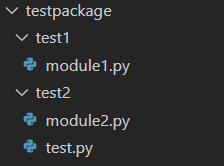六月下雨了,天又下了雨。我已经很久没有见过如此下雨了,柔软而缠绵,就像你的眼睛,轻轻地刷着我寂寞的肩膀。闻一闻书本,站在窗前,对朋友说:早上好!
需求
在自动化测试场景里, 有时需要在代码里获取远程服务器的某些数据, 或执行一些查询命令,如获取Linux系统版本号 \ 获取CPU及内存的占用等, 本章记录一下使用paramiko模块SSH连接服务器的方法
1. 先安装paramiko库
pip3 install paramiko
2. 代码
#!/usr/bin/env python
# coding=utf-8
"""
# :author: Terry Li
# :url: https://blog.csdn.net/qq_42183962
# :copyright: © 2020-present Terry Li
# :motto: I believe that the God rewards the diligent.
"""
import paramiko
class cfg:
host = "192.168.2.2"
user = "root"
password = "123456"
class sshChannel:
def __init__(self, cfg_obj, timeout_s=5, port=22):
self._cfg = cfg_obj
self.ssh_connect_timeout = timeout_s
self.port = port
self.ssh = self.connect_server()
def connect_server(self):
ssh_cli = paramiko.SSHClient()
key = paramiko.AutoAddPolicy()
ssh_cli.set_missing_host_key_policy(key)
try:
ssh_cli.connect(self._cfg.host, port=self.port, username=self._cfg.user, password=self._cfg.password,
timeout=self.ssh_connect_timeout)
except paramiko.ssh_exception.SSHException:
print("连接{}失败, 请检查配置或重试".format(self._cfg.host))
ssh_cli.close()
return ssh_cli
def execute_cmd(self, cmd):
"""
:param cmd: 单个命令
:return: 服务器的输出信息
"""
stdin, stdout, stderr = self.ssh.exec_command(cmd)
self.ssh.close()
return stdout.read().decode('utf-8')
def execute_cmd_list(self, cmd_list):
"""
:param cmd: 命令列表
:return: 服务器的输出信息的列表
"""
out_list = list(map(self.execute_cmd, cmd_list))
return out_list
def test_get_sys_version(self):
sys_version = self.execute_cmd("lsb_release -rd")
print(sys_version)
def test_get_sys_disk_free_and_memory_free(self):
sys_info = self.execute_cmd_list(["df -h -BG /", "free -m"])
print(sys_info)
if __name__ == '__main__':
server = sshChannel(cfg)
server.test_get_sys_version()
server.test_get_sys_disk_free_and_memory_free()
到此这篇关于Python使用paramiko连接远程服务器执行Shell命令的实现的文章就介绍到这了,更多相关Python使用paramiko连接远程服务器执行Shell命令内容请搜索以前的文章或继续浏览下面的相关文章希望大家以后多多支持!





